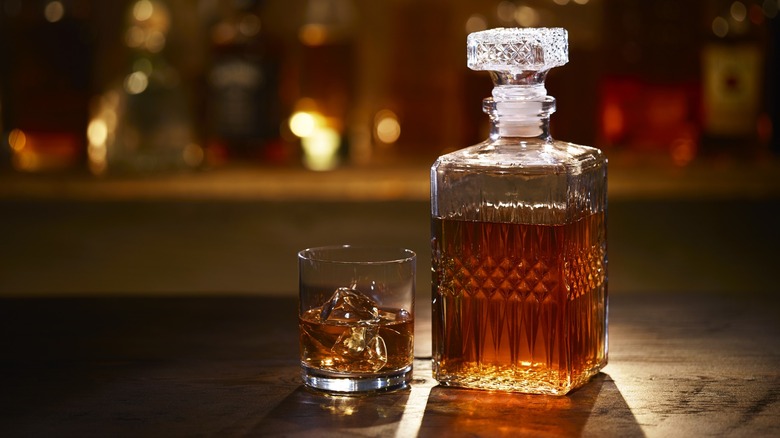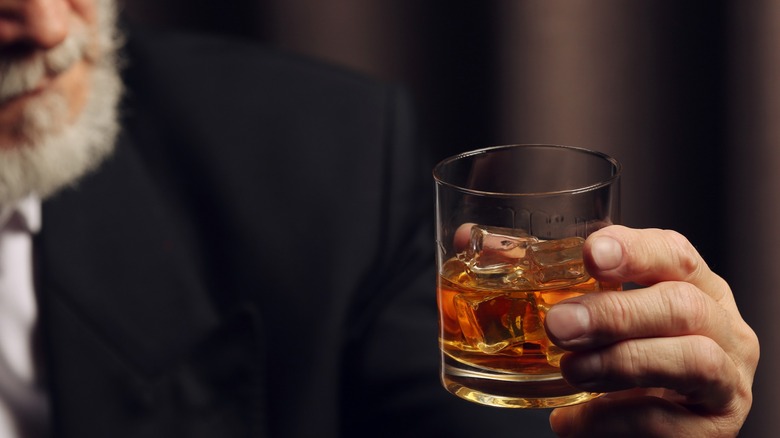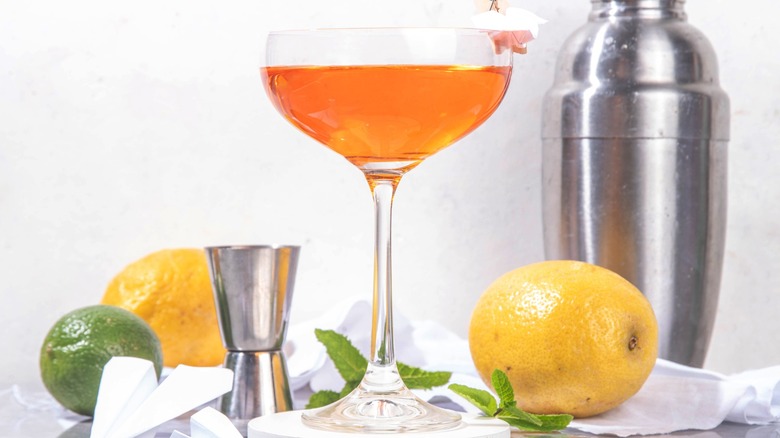Why No One Wanted To Drink Bourbon In The 1970s
Rebelling against the generation before you is a time-tested right of passage, and this tradition applies to everything from clothing to musical tastes to even booze preferences. In the late 1960s and early '70s, there was a culture-wide turning-up-of-the-nose toward bourbon due to the outdated associations with the drink, which was often enjoyed by older gentlemen (aka uncool dads). In short, bourbon just wasn't that trendy in the '70s. The corn-based type of whiskey has been around almost as long as America itself, though it's had a tumultuous timeline peppered with peaks and valleys largely due to economic instability, war, and the Prohibition era.
Given this rich history, there are many facts about bourbon you probably don't know. But as soon as Prohibition was repealed in the early 1930s, Americans began flocking back to the dark spirit. With the country growing more and more patriotic leading up to World War II, it made sense that Americans would reach for American-made whiskey when stocking up their home bars. Bourbon's popularity grew from there, with Congress even passing a resolution to recognize bourbon as America's official spirit in 1964. But this bourbon boon did not last for long.
Bourbon's fall from popularity
However, with the '70s came rebellious countercultures, punk music, anti-war movements, and a desire to shirk off the traditions of the past, including the stuffy imagery that came with drinking dark liquors. Although it's hard to imagine now, the Baby Boomers were so different culturally and politically from their parents that they're the ones who inspired the concept of a generation gap. Another reason bourbon had fallen out of favor was because there was too much of it. According to legend, Louis Rosenstiel, the founder of Schenley Distilleries, believed that the Korean War that unfolded in the early '50s would cause another whiskey shortage, just like World War II did.
So, Rosenstiel pre-planned, forcing his production facilities to go into a 24/7 schedule to barrel massive amounts of bourbon. However, Rosenstiel's prediction was wrong and the Korean War did not cause a whiskey shortage. What happened, instead, was that the market became oversaturated with bourbon, which made demand (as well as price) plummet. The downfall of bourbon brought with it an uptick in the popularity of lighter liquors like tequila, vodka, and gin, as Boomers looked for more novelty in their drinks. Around this time, martinis, wine coolers, and Moscow mules became the drinks of choice for young people imbibing at the local watering hole.
Bourbon's comeback story
Reviving a dying trend is also as inherent to American culture as '90s-era bucket hats are to Generation Z. When there's a liquor as rooted in American history as bourbon is, it was only a matter of time before enterprising individuals would look for a way to shake off the Mad Men-esque stuffiness in an effort to refresh the reputation of the brown liquor. By the 1990s, master distillers, tired of the bad bourbon rap and wanting to move product, discovered a real appetite for small-batch bourbon. By creating and releasing single barrel products, bourbon houses took advantage of a marketing angle based on exclusivity and sophistication.
Each small batch and single barrel bourbon allowed for experimentation with everything ranging from the recipe, alcohol content, and even drink characteristics. By limiting the amount and type of bourbon that drinkers and restaurants could buy, distillers drummed up demand and a "get it before it's gone forever" consumer attitude. As bourbon grew in popularity, so did bourbon cocktails. These days, you can find a wealth of delicious bourbon-based cocktails on bar menus across the nation. One relatively new bourbon cocktail, the Paper Plane invented in the 2000s, is a favorite of this Tasting Table writer and a great way to get into bourbon if you're not familiar with the spirit already.


